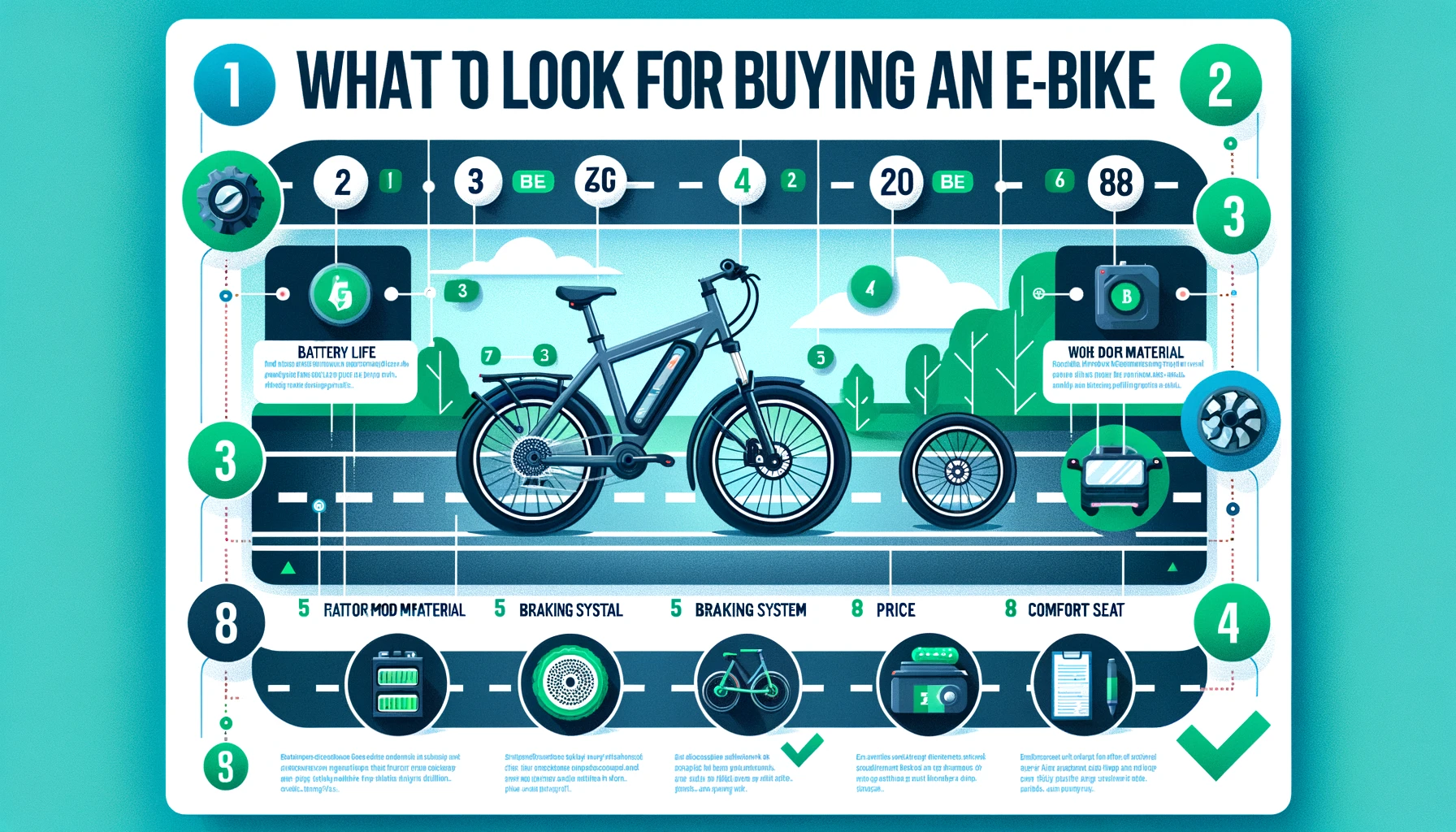We will discuss the key things What To Look For When Buying An Ebike. Whether you’re an experienced cyclist or a newbie, this guide will help you make an informed choice. When it comes to buying an ebike, there are several important features to keep in mind. These factors will ensure you choose the right bike for your needs and provide a smooth riding experience.
What To Look For When Buying An Ebike

Here’s a table outlining the main aspects to look for:
| Factor | Description | Notes |
|---|---|---|
| Purpose and Type | Decide the primary use (e.g., commuting, mountain biking) and choose the type accordingly (e.g., mountain, road, hybrid, folding). | Aligns the bike’s design with your needs. |
| Motor Type and Power | Look at the type (hub vs mid-drive) and power (measured in watts). | More power assists more on hills but may use more battery. |
| Battery Capacity/Range | Check the battery’s capacity (watt-hours) and estimated range. | Determines how far you can go on a single charge. |
| Frame and Build | Assess the material (aluminum, steel, carbon fiber) and overall build quality. | Affects weight, durability, and ride quality. |
| Braking System | Ensure it has effective brakes (mechanical or hydraulic disc brakes). | Crucial for safety, especially in wet conditions. |
| Gearing System | Consider the type and number of gears. | More gears offer flexibility in different conditions. |
| Suspension | Important for rough terrain rides. | Adds comfort by absorbing bumps. |
| Weight and Portability | E-bikes are heavier than regular bikes; consider weight and features like folding mechanisms for portability. | Important if you need to carry or transport the bike frequently. |
| Display and Controls | Look for an easy-to-use interface showing battery life, speed, assistance level. | Should be easily operable while riding. |
| Accessories | Check for included or available accessories like lights, fenders, racks. | Adds functionality and convenience. |
| Warranty and Service | Consider the length and coverage of the warranty, and the availability of service and parts. | Ensures long-term usability and support. |
| Test Ride | If possible, take the bike for a test ride to check performance and comfort. | Helps assess if the bike suits your needs. |
| Budget and Cost | Factor in your budget and the total cost of ownership, including maintenance and battery replacement costs. | Ensures the choice is financially viable in the long term |
Here’s what to look for:
- Purpose and Type of E-bike: Decide what you need the e-bike for – commuting, mountain biking, road biking, or casual rides. Different types of e-bikes are designed for specific purposes, such as mountain e-bikes, road e-bikes, hybrid e-bikes, and folding e-bikes.
- Motor Type and Power: Check the motor type (hub motor vs mid-drive motor) and its power, measured in watts. A more powerful motor will provide more assistance, especially on hills, but may consume battery faster.
- Battery Capacity and Range: Look at the battery’s capacity (measured in watt-hours) and the estimated range. This will determine how far you can travel on a single charge. Consider how this aligns with your typical riding distances.
- Frame and Build Quality: The frame material (aluminum, steel, carbon fiber) affects the bike’s weight, durability, and ride quality. Also, check the overall build quality and the components used.
- Braking System: Good quality brakes are crucial for safety. Check if the e-bike has mechanical or hydraulic disc brakes, which offer better stopping power, especially in wet conditions.
- Gearing System: The type of gears and the number of speeds can impact the bike’s performance, especially on varied terrains. More gears offer greater flexibility in different riding conditions.
- Suspension: If you plan to ride on rough terrain, consider an e-bike with good suspension to absorb bumps and provide a comfortable ride.
- Weight and Portability: E-bikes are generally heavier than regular bikes due to the motor and battery. If you need to carry the bike often, consider its weight and portability features like folding mechanisms.
- Display and Controls: Check the user interface for ease of use. It should provide essential information like battery life, speed, and assistance level, and be easy to operate while riding.
- Accessories and Customization: Look at what accessories are included or available, such as lights, fenders, racks, or the ability to add them.
- Warranty and Service: Consider the warranty offered on the bike and its components. Also, think about the availability of service and parts from the manufacturer.
- Test Ride: If possible, take the e-bike for a test ride to get a feel for its performance, comfort, and suitability for your needs.
- Budget and Cost: Finally, consider your budget and the total cost of ownership, including potential maintenance and battery replacement costs.